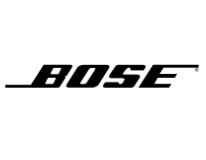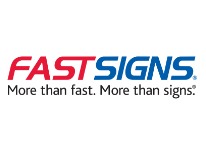Budgeting for a CNC Router: Cost Considerations and ROI Analysis
CNC routers are precision tools that play a crucial role in various industries, automating the cutting and shaping of materials like wood, metal, and composites. These machines are essential for improving productivity and creativity in manufacturing, woodworking, and even small businesses.
When considering the purchase of a CNC router, understanding the financial aspects is paramount. The cost of a CNC router can vary significantly based on its capabilities and specifications.
Most of the top-rated CNC routers are known for their reliability and performance, but they come with a higher price tag. Top CNC routers offer superior quality and support, which can justify the investment.
In this comprehensive guide, we at the CAMaster will explore the detailed cost considerations and ROI analysis associated with purchasing and operating a CNC router. We will explore from initial purchase costs to ongoing maintenance expenses. Our goal is to provide a clear understanding of what to expect financially.
By the end of this article, you will be equipped with the knowledge to make an informed decision, ensuring you select the best CNC machine for your needs while maximizing your return on investment.
Understanding the Initial Costs
When budgeting for a CNC router, it’s essential to understand the various initial costs involved. These expenses go beyond the purchase price and include installation, setup, training, and software.
By considering all these factors, you can make a more informed decision and ensure a smooth integration of your CNC router into your operations.
Purchase Price
The purchase price of a CNC router is influenced by several factors, including the machine’s size, capabilities, and brand.
Entry-level desktop CNC routers, suitable for small businesses or hobbyists, typically range from $2,000 to $10,000. These models offer basic functionality and are ideal for less demanding tasks.
Mid-range CNC routers, which provide a balance between cost and performance, can cost between $10,000 and $50,000. These machines are suitable for more complex projects and offer greater precision and versatility.
High-end industrial CNC routers, such as those from top brands like CAMaster, can range from $50,000 to over $150,000. These CNC routers offer advanced features, higher speeds, and superior build quality, making them the best CNC machine for small businesses looking to scale their operations.
Installation and Setup Costs
Installing and setting up a CNC router involves several additional expenses. Shop preparation is a significant factor, as the area where the CNC router will be placed needs to be adequately prepared.
This may include reinforcing the floor to support the weight of the machine, ensuring sufficient space for operation, and setting up dust extraction systems.
Electrical work is another critical expense, as CNC routers often require dedicated power connections and proper grounding to function safely and efficiently. The cost for electrical work can vary widely depending on the complexity of the setup and the existing infrastructure.
Initial calibration of the CNC router is also necessary to ensure precision and accuracy. This process may involve professional services, adding to the initial costs.
Training and Software
Training operators and purchasing the necessary software are crucial investments for maximizing the efficiency and productivity of your CNC router. Proper training ensures that operators can use the machine safely and effectively, reducing the risk of errors and downtime. Training programs can range from on-site sessions provided by the manufacturer to online courses and workshops, with costs varying accordingly.
Additionally, the software needed to design and control the CNC router can be a significant expense. High-quality software solutions are essential for creating detailed and accurate designs, and they often come with licensing fees or subscription costs. Investing in reputable software and comprehensive training can significantly enhance the performance and capabilities of your CNC router, ensuring a higher return on investment.
Understanding these initial costs is vital for planning your budget and ensuring the successful integration of a CNC router into your operations. By considering purchase prices, installation and setup costs, and the expenses related to training and software, you can make a well-informed decision that aligns with your financial and operational goals.
Ongoing Operational Costs
When considering the total cost of owning a CNC router, it is important to account for ongoing operational expenses. These costs include regular maintenance and repairs, consumables and tooling, and energy consumption. Understanding these factors can help you budget more accurately and ensure the long-term efficiency of your CNC router.
Maintenance and Repairs
Regular maintenance is crucial for keeping your CNC router in optimal working condition. Routine tasks include lubricating necessary parts per the manufacturer’s recommendations, checking for wear and tear, and ensuring proper alignment. Maintenance schedules may include daily, weekly, and monthly checks.
The costs for maintenance can vary, but generally, you should expect to spend several hundred dollars annually on lubricants, cleaning supplies, and minor parts replacements.
Repairs, on the other hand, can be more costly and unpredictable. Common repair expenses include replacing worn-out bearings, belts, and other mechanical components. High-end professional CNC routers might have higher costs for replacement parts, but their superior build quality often results in less frequent repairs.
On average, repair costs can range from a few hundred to several thousand dollars, depending on the severity of the issue and the availability of parts.
Consumables and Tooling
Consumables and tooling are ongoing costs that can add up over time. Cutting tools, such as end mills and router bits, need to be replaced regularly as they wear out. The frequency of replacement depends on the type of material being processed and the intensity of use. High-quality cutting tools can range from $20 to $200 each, with the total annual cost varying based on your production volume.
Lubricants and coolants are also necessary to maintain the smooth operation of your CNC router. These help extend the operating lifespan of your machine and tools.
Additionally, materials such as wood, metal, and composites are ongoing expenses, particularly for businesses with high production rates. Selecting cost-effective tooling options, such as purchasing in bulk or choosing durable, long-lasting tools, can help manage these costs more effectively.
Energy Consumption
Energy consumption is another significant factor in the ongoing operational costs of a CNC router. These machines can consume a considerable amount of electricity. The energy usage depends on the size, type, and workload of the CNC router. For example, a desktop CNC router typically consumes less power compared to larger, industrial-grade models.
To estimate energy costs, consider the power rating of your CNC router and the number of hours it operates daily. Understanding and optimizing energy consumption can help reduce operational costs and improve the overall efficiency of your production processes.
By factoring in maintenance and repairs, consumables and tooling, and energy consumption, you can better anticipate the ongoing operational costs of your CNC router. This comprehensive approach ensures that you are prepared for both routine expenses and unexpected challenges, allowing for more effective budget management and long-term operational success.
Maximizing Return on Investment (ROI)
Investing in a CNC router can yield substantial returns by enhancing productivity, improving product quality, and opening new market opportunities. Understanding these benefits can help you maximize the ROI of your CNC router.
Productivity Gains
CNC routers significantly increase productivity and efficiency by automating complex cutting and shaping tasks. Unlike manual operations, CNC routers can run continuously, reducing the time required to complete projects. For instance, tasks that once took hours or days can now be completed in a fraction of the time with a professional CNC router. This automation not only speeds up production but also reduces labor costs, as fewer operators are needed to oversee the machine.
An example of time and labor savings can be seen in the woodworking industry, where a top-rated CNC router can produce intricate designs and cuts much faster than traditional methods. This increased efficiency allows businesses to take on more orders and complete projects quicker, ultimately leading to higher revenue and profitability.
Quality and Precision
One of the key advantages of using a CNC router is the improvement in product quality and precision. CNC routers are capable of producing highly accurate and consistent results, which is crucial for maintaining high standards in manufacturing. The precision of American-made CNC routers, for example, ensures that each piece produced meets exact specifications, reducing the likelihood of errors and rework.
These improvements in quality and precision lead to higher customer satisfaction. When customers receive products that consistently meet or exceed their expectations, they are more likely to become repeat customers and refer your business to others. This increased customer loyalty and positive word-of-mouth can drive long-term business growth and success.
Market Expansion
CNC routers also enable businesses to expand their product offerings and tap into new markets. The versatility of CNC routers allows for the creation of a wide range of products, from intricate wooden furniture to precise metal components. This flexibility opens up opportunities to diversify your product line and cater to different customer needs.
For instance, a small business using a desktop CNC router can start producing custom signs, plaques, and other personalized items, thereby reaching new customer segments. Similarly, a company with a high-end CNC router can venture into producing specialized parts for industries such as aerospace, automotive, sign making, and healthcare, where precision and quality are paramount. By leveraging the capabilities of a CNC router, businesses can explore new market opportunities and drive additional revenue streams.
Maximizing the ROI of your CNC router involves recognizing and capitalizing on the productivity gains, quality improvements, and market expansion opportunities it offers. By automating processes, enhancing product precision, and diversifying your offerings, you can ensure that your investment in a CNC router translates into substantial financial returns and long-term business growth.
Key Factors to Consider When Budgeting
When budgeting for a CNC router, it’s crucial to consider several key factors that will influence both the initial investment and long-term value. These factors include machine specifications, vendor reputation and support, and integration with existing systems.
Machine Specifications
Selecting the right machine specifications is vital to meet your business needs and ensure optimal performance. Key factors to consider include:
- Build: The build quality of CNC routers, particularly features like a welded steel frame and steel gantry, is crucial for ensuring precision, durability, and stability in machining operations.
- Speed: High-speed CNC routers can significantly enhance productivity by completing tasks faster. Consider the operational speed that matches your production volume.
- Accuracy: Precision is critical for maintaining product quality. Look for CNC routers that offer high levels of accuracy and repeatability to ensure consistent output.
- Material Compatibility: Ensure the CNC router you choose can handle the materials you work with, whether it’s wood, metal, composites, or other substances. Different models offer varying capabilities, so align the machine’s features with your specific requirements.
Choosing a CNC router with the right specifications can prevent future bottlenecks and ensure you maximize the machine’s potential in your production process.
Vendor Reputation and Support
The reputation and support provided by the vendor are crucial considerations when purchasing a CNC router. Benefits of choosing a reputable vendor include:
- Warranty: A comprehensive warranty can protect your investment by covering repairs and replacements for a specified period.
- After-sales Service: Reliable customer support ensures you can quickly resolve any issues that arise, minimizing downtime. Look for vendors who are known for their excellent support and robust, American-made CNC routers.
- Training and Resources: Many top-rated CNC router vendors offer training programs and resources to help you get the most out of your machine, further enhancing your ROI.
Selecting a vendor with a strong reputation and excellent support services can provide peace of mind and long-term benefits.
Integration with Existing Systems
Integrating a CNC router with your existing production systems is another key factor to consider. This process can involve several potential costs and challenges:
- Compatibility: Ensure the CNC router is compatible with your current systems, including software and hardware. Incompatibility can lead to additional costs for upgrades or modifications.
- Installation and Setup: Beyond the purchase price, budget for installation and setup costs, including any necessary modifications to your facility to accommodate the new equipment.
- Training: Integration often requires training your staff to use new systems effectively, which can incur additional costs but is essential for seamless operation.
- Potential Downtime: Plan for potential downtime during the integration process, as this can temporarily impact production schedules.
By carefully considering these integration factors, you can ensure a smooth transition and maximize the efficiency of your CNC router within your existing production environment.
Taking these key factors into account when budgeting for a CNC router will help you make a well-informed decision. This will ensure that the machine you choose aligns with your business needs and provides long-term value.
Tips for Effective Budget Management
Effectively managing your budget is crucial when investing in a CNC router. By accurately estimating costs, conducting thorough cost-benefit analyses, and planning for the long term, you can ensure a sound financial strategy that maximizes your investment’s value.
Cost Estimation and Planning
Accurate cost estimation and planning are foundational steps in managing your CNC router budget. Start with a comprehensive list of all potential expenses, including purchase price, installation, setup, training, software, maintenance, and consumables. This detailed breakdown helps ensure you don’t overlook any costs.
Obtaining quotes from multiple vendors is also essential to compare prices and services. This helps you get a realistic idea of the market rates and identify the best value for your investment.
Always include a contingency fund in your budget. Unexpected expenses, such as unplanned repairs or additional training, can arise, and having a buffer helps manage these costs without disrupting your overall budget.
Budget planning is not a one-time task. Regularly review your budget and adjust as necessary to account for any changes in costs or operational needs.
Cost-Benefit Analysis
Conducting a cost-benefit analysis is essential to justify the investment in a CNC router. Here are some key points to consider:
- Identify Benefits: List the expected benefits, such as increased productivity, improved product quality, and expanded market opportunities.
- Quantify Benefits: Assign monetary values to the benefits wherever possible, such as estimated labor savings, increased revenue from higher production capacity, and reduced material waste.
- Compare Costs and Benefits: Weigh the total costs against the quantified benefits to determine the net gain from the investment.
- Evaluate Metrics: Use metrics such as return on investment (ROI), payback period, and net present value (NPV) to evaluate the potential returns. For example, if a CNC router reduces production time by 20%, calculate the associated labor cost savings over a year.
Long-term Financial Planning
Long-term financial planning is vital to ensure the sustainability and profitability of your CNC router investment. Anticipate future costs related to maintenance, repairs, upgrades, and consumables. Creating a forecast helps you allocate funds appropriately and avoid financial surprises.
Estimate future revenues based on increased production capacity, new market opportunities, and improved product quality. Use historical data and market trends to make realistic projections. Factor in depreciation of the CNC router and potential tax benefits. Understanding how these elements affect your financials can help optimize your budget.
Plan to reinvest a portion of the increased revenue back into the business. This might include saving for future equipment upgrades or expanding your production capabilities.
By applying these tips for effective budget management, you can ensure a well-planned, financially sound approach to investing in a CNC router, ultimately maximizing the return on your investment and supporting long-term business growth.
Conclusion
In conclusion, budgeting for a CNC router requires careful consideration of various initial and ongoing costs. These include purchase price, installation, maintenance, consumables, and energy consumption. Understanding these financial aspects is crucial for making an informed investment decision.
Additionally, evaluating the return on investment (ROI) through productivity gains, improved quality, and market expansion can help justify the expenditure and highlight the long-term benefits of owning a CNC router.
Are you ready to take your production to the next level? Consider upgrading to a USA-made CNC router. Contact CAMaster today to learn more about our CNC routers for sale. Our American-made CNC routers are crafted with precision in the USA.
Call us at 770-334-2448 to request a quote!
Want to upgrade your CNC workflow?
Discover our industrial-grade CNC solutions tailored to your needs. Learn more →















